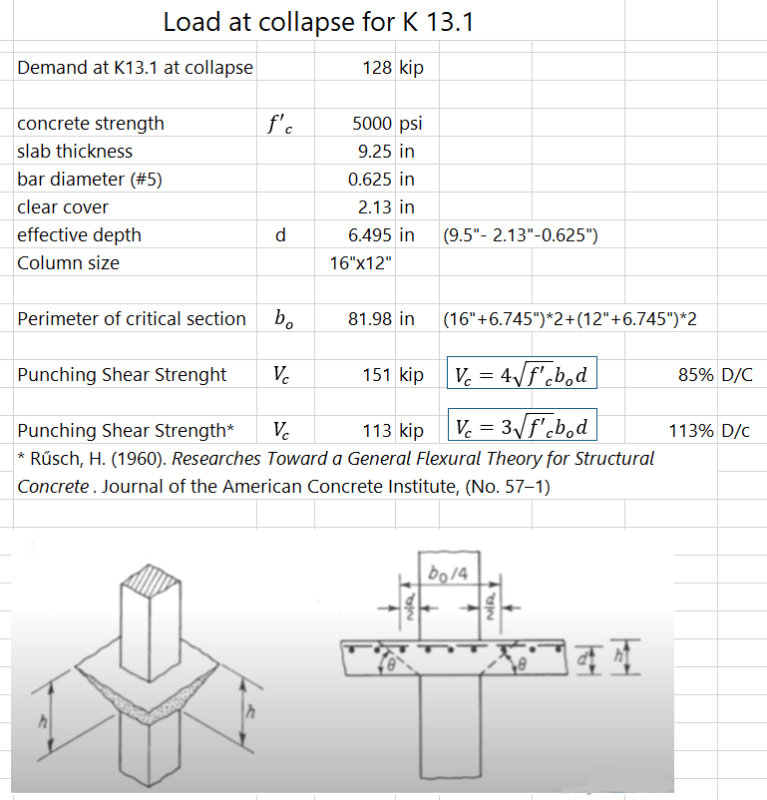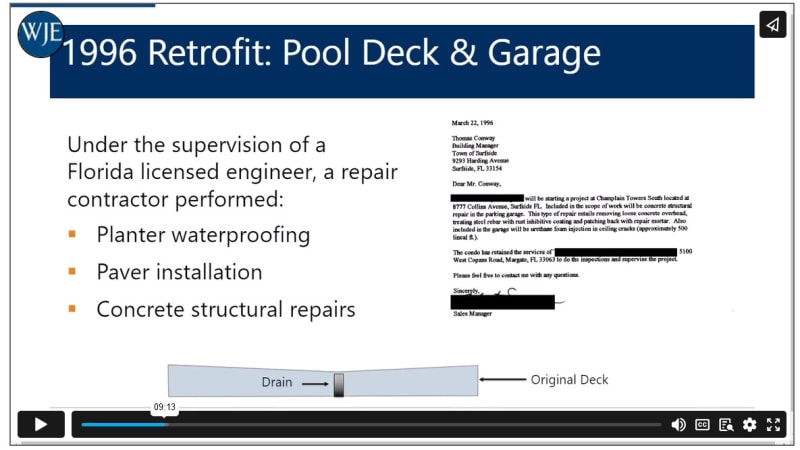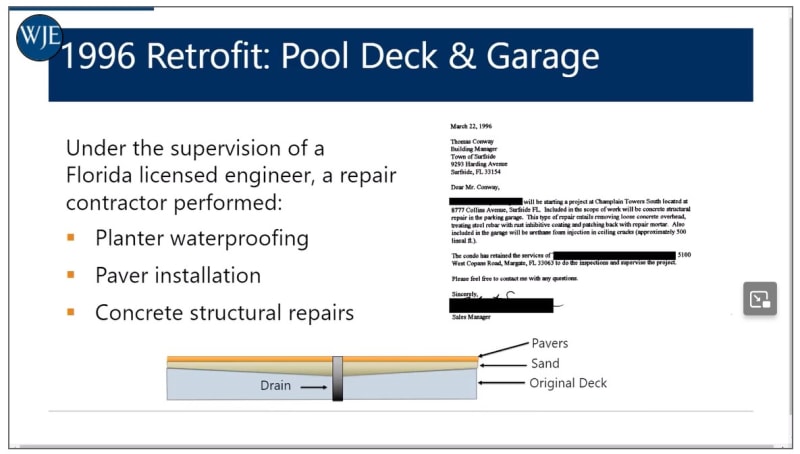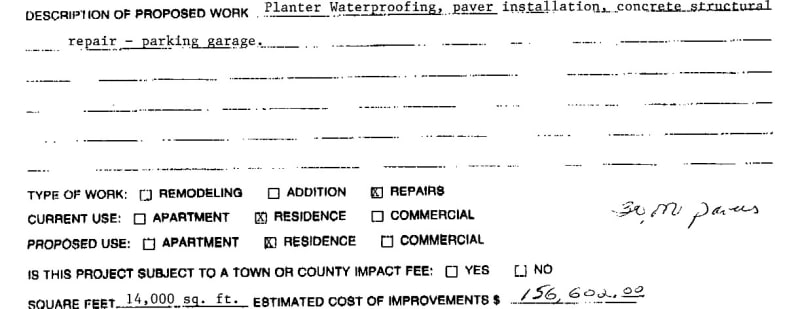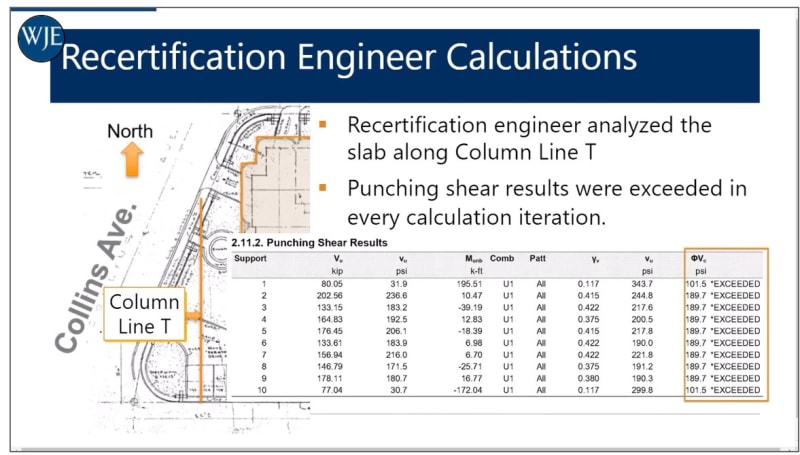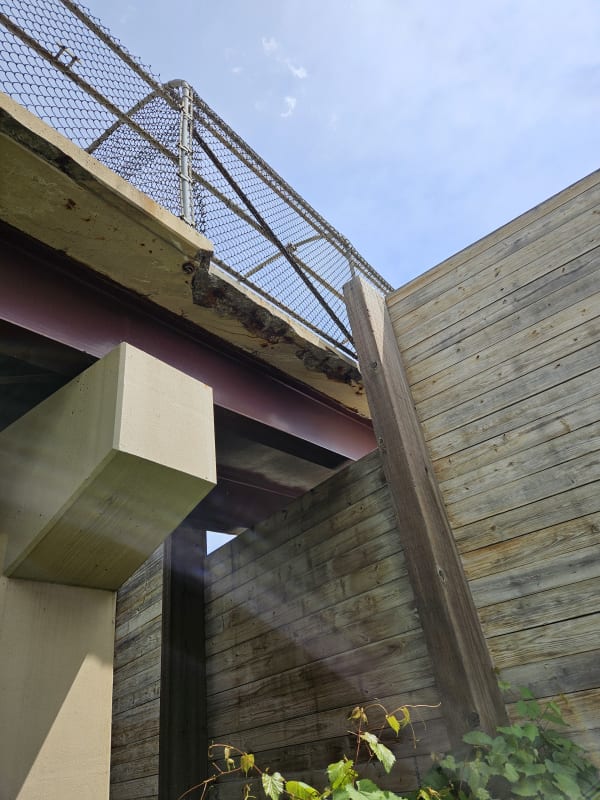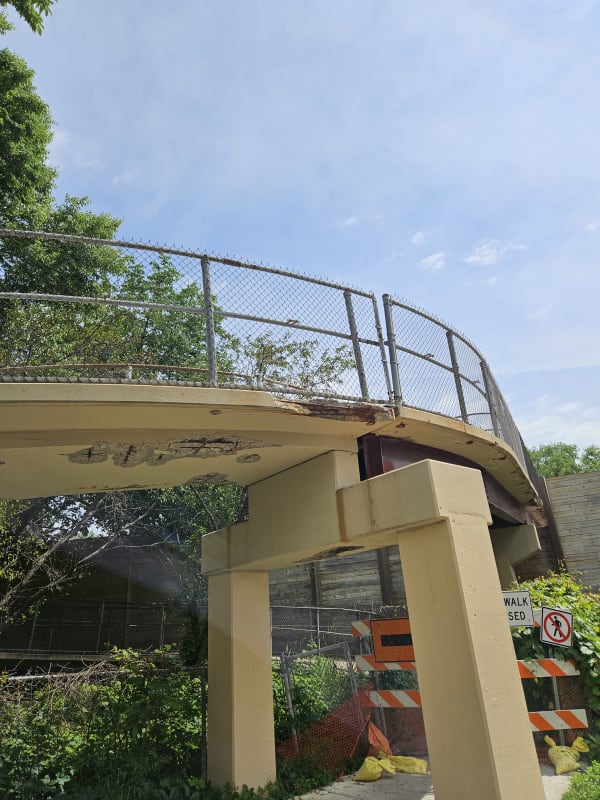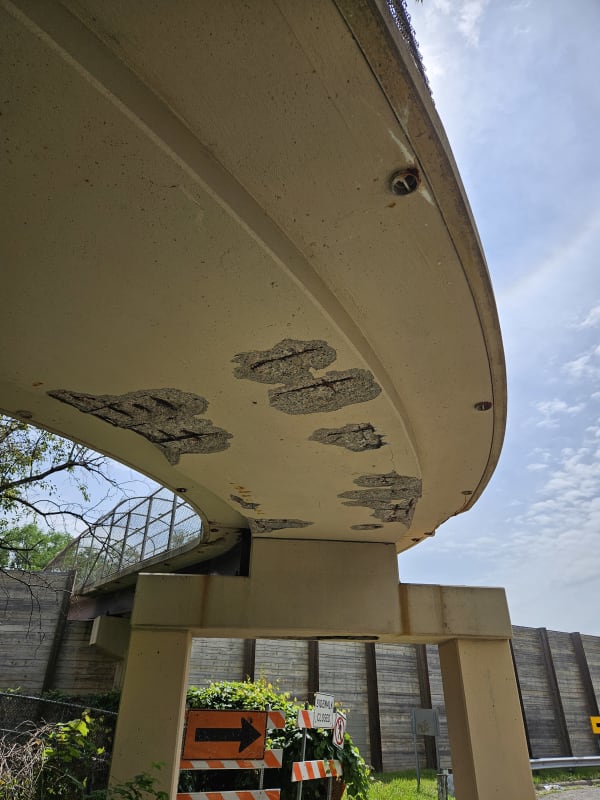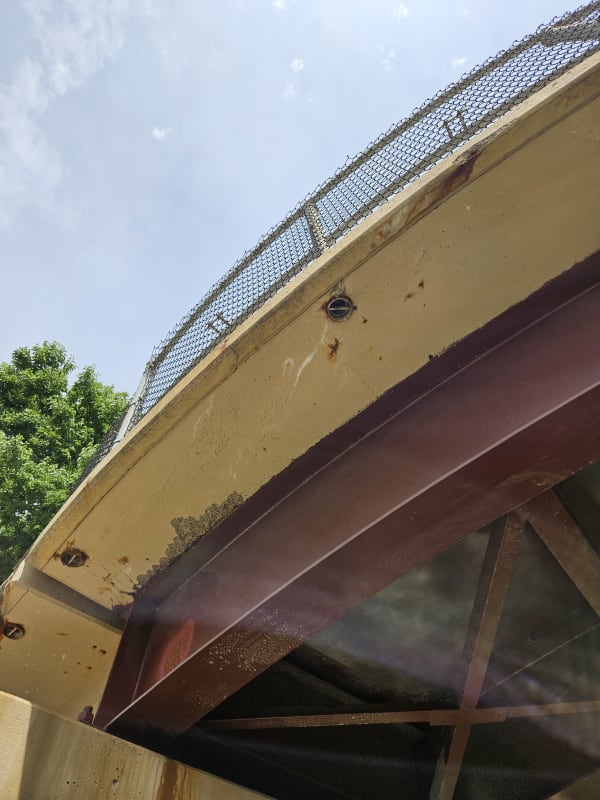Dave, read what I'm writing versus skimming, deciding what I'm writing and then "refuting" it and saying I'm "confused." You can stop that now. Thanks.
So we're clear, I still think you're inaccurate, you've just glossed past it and declared mission accomplished. Maybe you have documentation I don't know about.
You have an opinion, it's on you to present evidence for it. You are expected to lay the foundation for your
opinion. You have the burden of proof here, it isn't my job to disprove whatever you write, it's on you to prove it, it's actually on you to have proof before you speak, i.e.
be objective. Convince me. Convince others, should they choose to engage with your ... tone. Show the connective tissue.
You think there's a deficiency in the design, fine, but you're supposed to produce the calculations (or at least the results), you're supposed to find the supporting information, not me, not anybody else.
When I said I hadn't seen any punching shear calculations in the thread here, then you seize on this as somehow like it's me being deceptive, or confused, and point at the WJE seminar, which I hadn't seen. Just. Not. The. Case.
When I talk about calculations, I mean the full calculation, as in the level of detail that would be in a calculation package, not the result only or a demand/capacity ratio that's quite fuzzy on what exactly was done in the calculation (WJE has presented the results of their analysis, not the full calculations that produce the analysis, you can recreate them, at least potentially, provided you get the right phi (0.75 for shear in ACI 318-77), the right depth, the right strength of concrete, the right load factors and loads, and you correctly interpret when they are not using the phi or load factors, which cover they are using, etc., so can I, but they've not published them, nor has anybody else, up to now, as of your post like yesterday), that's why I said "I haven't seen any calculations".
This is what you said earlier:
Dave.Smith.NYC said:
I saw the notes from Gary Klein that Morabito had in their file structural analysis software data printouts that indicated punching shear deficiencies with the original design. I have not seen any information regarding why Morabito didn't take action regarding these data printouts. It's possible, but they were not using the software with that purpose, and simply did not look at all of the data printouts, I have no idea anything I would say would be conjecture.
You're apparently referring to the WJE slide in the presentation as "notes from Gary Klein", rather than some published notes elsewhere. Fine. That isn't how I'd describe a slide from a presentation, I thought you were saying there was something published elsewhere.
So, just to clarify, here's what I wrote:
lexpatrie said:
The punching shear calculations presented by WJE are along column line T. This area does not appear to have failed during the collapse, at any point...
Unless I understand WJE wrong...
It's clear that I'm talking about Line T. You were talking about what Morabito had. That's where WJE presents Morabito's output. You were talking about Morabito there. That's what I'm responding to.
Dave.Smith.NYC said:
You must understand WJE wrong, their entire presentation focuses in on K13.1. it's even on the screenshot you have. Their calculations are not for column line T? Based on the label on their table and their discussion, the "as design" column calc is back in 1980 utilizing calculations from ACI 318-77. For their "at collapse" calculation, their dead load includes the weight from the 96 renovations.
I don't understand WJE wrong. You're not understanding what I'm talking about and skipping over what I wrote.
Again, I'll say it again, the calculations you were referring to, the ones WJE says Morabito had, and I'm talking about in the quote above, is for Column Line T. This is not where anyone has suggested collapse initiated. I'm talking about this because you mention Morabito had these calculations but didn't fix the pool/plaza deck.
This is inaccurate. The calculations they had were for Line T, where there's modifications taking place, and Morabito reinforced the structure.
You think you're catching me "confused" but that's not the case, you're narrowing your interpretation to something that fits your view so you can argue it. This is a discussion, not an argument. You have a coherent paragraph here, "Morabito had in their file..... Morabito didn't take action...." what's being misrepresented here is WJE says Morabito had calculations
for Line T, and
there is reinforcing on the Phase IIc drawings in this area (you show it in your diagram, when you responded to me, the backwards red revision cloud). This whole paragraph is demonstrably false, as written. What I guess you did is jumped to another discussion entirely after that first sentence, which was about Line T, and now are claiming Morabito ignored a
punching shear deficiency in the plaza that they had in their calculations. This doesn't seem to be anything WJE said, and it doesn't appear to be anywhere in the discussion here, or elsewhere, so please present your source, or clarify. As I see this now, this is either careless writing or an error in your thinking, or, as you say, conjecture. I haven't seen anybody say Morabito had calculations for punching shear in the plaza/pool deck area.
I guess I'll just start over from the top. There's little point discussing your latest rather condescending post when 80% of the erm, "discussion" there stems from misunderstandings or misinterpretations of what I wrote before. Despite what I said, I'm going to put forth my findings that to me, pretty clearly contradict many of your assertions.
Dave.Smith.NYC said:
Well for the engineer in the '90s that added additional deadload (sic); that action would have required them to analyze enough of the existing structure down to grade to satisfy that the existing structure could satisfactorily carry the additional loads. If that analysis was performed correctly, it would have included the punching shear check at the deck to column connections. That check would have identified a gross under design (especially relative to prescriptive code requirements) and likely would have triggered temporary shoring and strengthening to increase the punching shear capacity at the columns.
This is a nice, convenient, and comforting thought, but I'm not remotely convinced it's accurate. I haven't seen anything definitive about added dead load on the plaza, not that I've read all 18 sequences of the discussion here, or read all the permit documents, but I don't recall seeing that. WJE showed in their slide:
Source: WJE 9:13
I'm not going to name the 1996 engineer here, mostly because they appear to be still alive, but also because WJE blurred out their name. I don't know why exactly they did that, but fine.
While WJE claims "added dead load" e.g. paver installation, the document they blur out (the engineer's certification letter on the repairs in the parking garage) says nothing about paver installation. So was the 1996 engineer aware of that part? It's not in their certification. The document WJE blurs out and obscures doesn't mention paver installation, so that's a false accusation already. The document they reference sure looks like that engineer's involvement was constrained to just the parking garage. There is no definitive proof that engineer knew of the added weight, particularly in light of the repair they certified is being done is in the parking garage. The permit does list the engineer and disclose paver installation.
Anyway, if you are aware of some document, somewhere, indicating dead load being added,
proving that the 1996 engineer knew about it, please present it. Your desire to lay this at the feet of what appears to be a spalling repair in the parking garage, well, I don't see any evidentiary support for it. That seems really inaccurate and unsupported by any documentation I've seen. Is this your opinion based on independent verification, or is it based on the say-so of WJE?
Source: WJE 9:30
This is incredibly deceptive on WJE's part. Flat out. The only documentation on the engineer's involvement indicates structural concrete repair in the parking garage, then they put up a slide saying "under the supervision of an engineer, Paver installation", and put the certification language that directly contradicts their claim, then throw up a cross section that shows the pool deck, where it's not even remotely clear that engineer was involved.
[Side note regarding the
truth, from 1931.]
This is what an infinite budget review of documentation produces... an intern spends a week mapping parking spots to columns in videos online [with perhaps zero involvement of the professional engineer in responsible charge] and nobody can be bothered to read a 23 page document. And then somebody watches the presentation and takes it as fact without any review.

WJE says there was a layer of sand and pavers "added" (9:25) but WJE doesn't present a document showing that (the bundle of pages with the 1996 engineer does mention interlocking pavers, but again, that document is a permit document from the contractor, pretty clear the engineer had no involvement in the preparation of that document). Just because they put the engineer's name on the permit doesn't mean the engineer is on for the full scope. I'd be surprised if the engineer ever saw that permit application, and their certification letter certainly does NOT reflect the purported scope of work the contractor put in the permit (no mention of planter waterproofing, no mention of paver installation being "done in compliance" with the SFBC.
And if the engineer is supposed to be certifying the plaza and the paver installation, the city didn't make that happen. So, yeah.
The satellite imagery isn't of a quality to show pavers or not prior to 1996, even if it were better quality distinguishing mortar set tile versus interlocking pavers from a satellite photo seems a bit of an adventure. Still, it seems a bit odd they would be added and there's no documentation on it. What if there were pavers and sand there prior, and the repair work took portions of it up to repair waterproofing? The documents show pavers, sure, but there's no indication the engineer knew about it.
The engineering certification I looked at mentioned a spalling repair of 20 ft
2 on what sounds like the underside, where exactly is not stated, it says "waterproofing of the deck" and doesn't give any column line references and there's no map. It doesn't mention adding sand and pavers, either. One might be tempted to presume it was the plaza deck, that seems reasonable, but that's not actually in evidence (In fact, the March 22, 1996 letter from Western Waterproofing says "concrete structural repair in the parking garage", and goes on to identify the person and say they've been retained "to do the inspections and supervise the project").
There's a mention of waterproofing in the engineer's certification, but that would be above the topping, would it not, and given the spalling is in the parking garage, wouldn't the waterproofing be there as well?
Both the pool deck and the parking garage (from the Morabito cores) have a topping slab (according to WJE 12:06). Wouldn't the waterproofing layer be atop that?
Now to the unfounded allegations/speculation/conjecture:
From the WJE presentation, they think the original designer knew about the topping slab. There's no evidentiary support for that, but they think the original engineer (Breitermann) knew about it (12:40). No facts in evidence to support that, that's speculative, but fine. The other explanation is they didn't know and the contractor added it, and/or the Architect knew and authorized the "add" but didn't bother to inform the engineer. Or the Architect ordered it, or the contractor added it out of the goodness of their own heart for no obvious reason (rather unlikely given the cost), but didn't they have an on-site mixer? (I'm going to point at Station Square, 1988, where the contractor added a lot of concrete weight to an already not-great structural design, and it collapsed on opening day, the engineer (and maybe the architect) were unaware of the added weight, the engineer understood the added width of the walkway was to be done with extra insulation). I don't think anybody involved in this project is alive, not the original project.
If the topping slab is already there in 1996, under a mortared down tile, how's the second engineer supposed to know it's there? When the architectural/structural cross section shows mortar and tile and concrete? I'm not even sure the 1996 engineer had any of the drawings, nobody has said that, either.
Then there's sand and pavers. The 1996 work WJE didn't really demonstrate anything at all as to what was done and where, unless you're counting what could be replacement pavers, or that the engineer was never aware of the sand and pavers, or was even involved in the plaza/pool deck at all. Considering the level of reputational damage being levied at the unnamed engineer, this should have had much much more evidentiary support.
Without conceding the hypothetical (i.e. the 1996 engineer knew about the added weight of the pavers):
There would be no particular reason for a structural analysis when the pavers are being removed and replaced with similar weight items, particularly if there's no knowledge of the (not designed for) topping slab. It does appear the sand and pavers were added at this time, the extent isn't clear from the permit.
Even if the 1996 engineer knew there was a topping slab, I'm not convinced that would be enough to trigger an engineer to run calculations. If dead load is being added, I would like to have seen calculations, but I'm not convinced anybody in 1996 either knew the topping slab was added and not designed for, or that the engineer was aware of the added sand and pavers. It looks like the City was aware of the interlocking pavers being added, that's about it, they might have missed there's a parking garage under it, at which point they would be unconcerned with "adding" pavers to a slab on ground.
There isn't definitive documentation either way that I've seen. It seems like sand and pavers were added, but it doesn't seem like the 1996 engineer knew about it, (the certification is for the spalling repair, in the parking garage), and if they did, it's possible they did check the punching shear and it worked because they didn't have the topping slab in the calculation, because they didn't know about it, and because they'd have used the cover "as specified".
Dave.Smith.NYC said:
I saw the notes from Gary Klein that Morabito had in their file structural analysis software data printouts that indicated punching shear deficiencies with the original design. I have not seen any information regarding why Morabito didn't take action regarding these data printouts. It's possible, but they were not using the software with that purpose, and simply did not look at all of the data printouts, I have no idea anything I would say would be conjecture.
Source; WJE seminar, 14:50
According to WJE the software is
Sp-slab, (formerly ADOSS), it's possible this isn't using the "as-built" phi, for one.
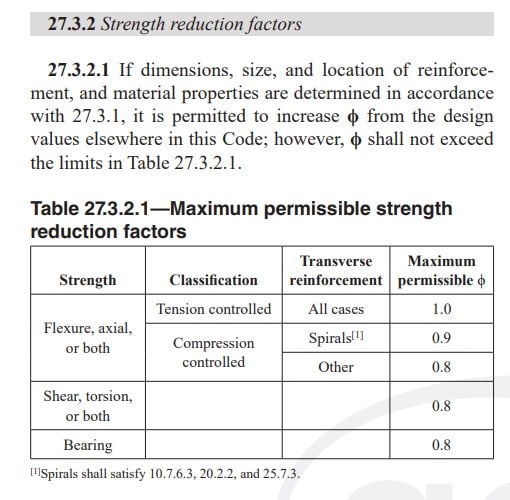
The shear calculations you say Morabito "had" were, as I already said, NOT on the portion of the building that failed (presumably the plaza, per WJE). WJE presented analysis results (from Morabito) on Line T. You keep claiming "indicates punching shear deficiencies with the original design", this is not a line that failed, and as far as anything I've seen, that area did not collapse. It's on the far West side of the building where the building did not collapse (until it was intentionally demolished). This Line T is checked, for a changed condition that Morabito is analyzing, because (I think) they're cutting in a new exit/entrance to the below grade garage. They are doing these calculations due to the changed conditions, i.e. redesign, not as part of recertification. As far as recertification goes, this is unnecessary. The work is being folded in with the recertification. With the changed support conditions, Morabito appears to have performed a strength check, and reinforced it for the changed loads, hence the drop slabs in this area. Also note there's an unbalanced moment and a gammav, so this is not a "pure" punching shear check.
What I particularly take issue with is your claim:
Dave.Smith.NYC said:
I have not seen any information regarding why Morabito didn't take action regarding these data printouts. It's possible, but they were not using the software with that purpose, and simply did not look at all of the data printouts, I have no idea anything I would say would be conjecture.
Unless you jumped topics mid-paragraph, or I missed WJE saying there are Morabito calcs for the plaza/pool, this is really misleading and inaccurate. In the previous sentence, the data you are discussing is for Line T, in your later post you show where there's column/slab joint reinforcing on Line T. This is where Morabito had calculation results showing a punching shear deficiency (whether it's "as designed by Breitermann" or due to changed conditions nobody has said. Morabito took action on the area they identified as needing reinforcement on Line T. So they did take action.

